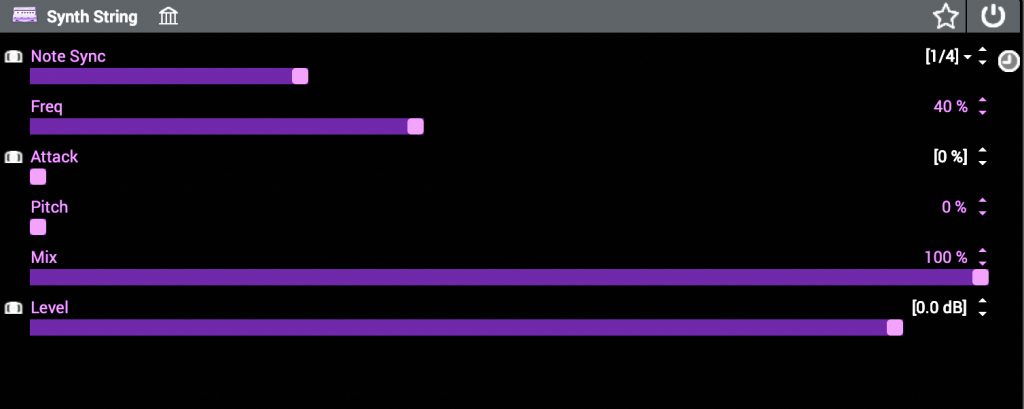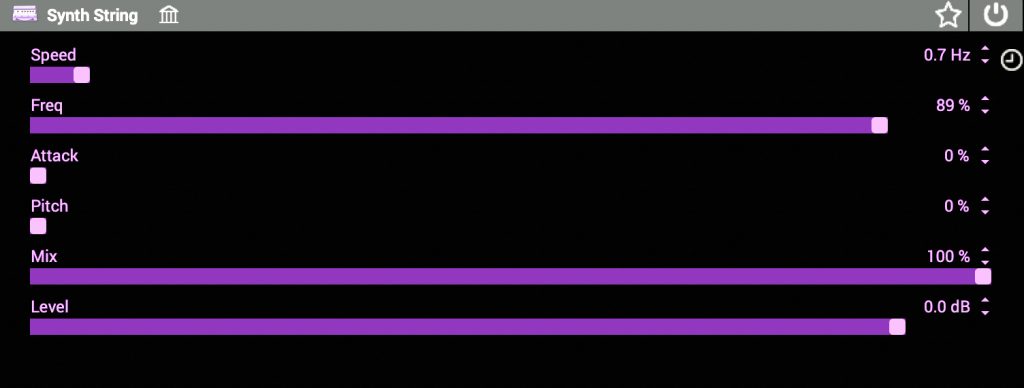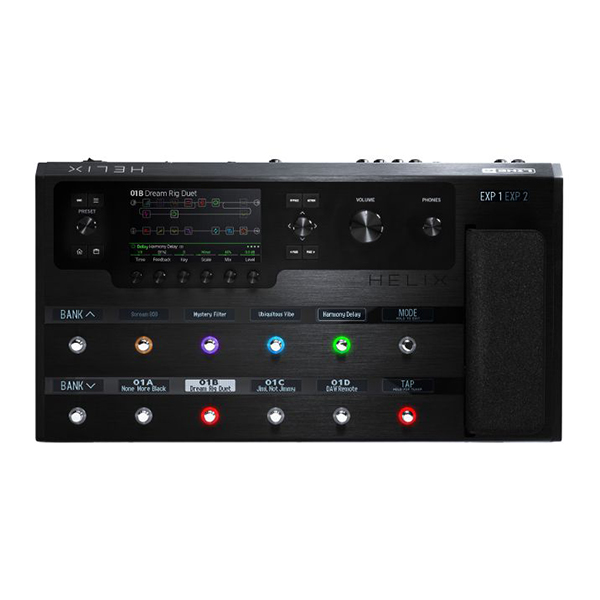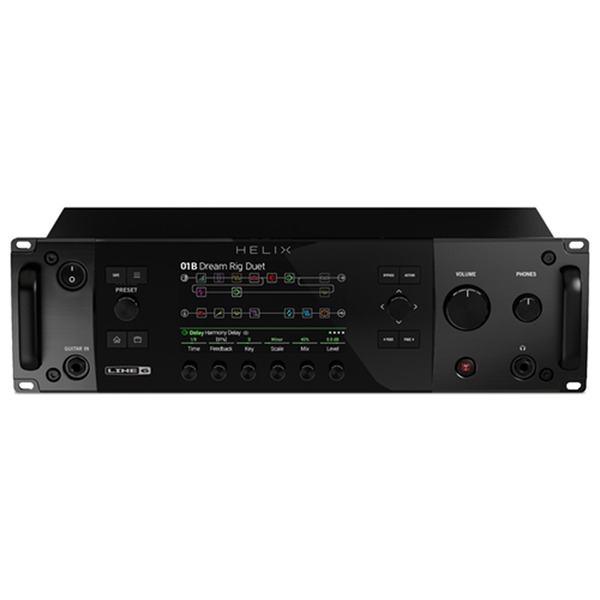Jeff Schroeder: Ambient Sounds Pt. 2 – Attack of the Synths
by Jeff Schroeder

The inspiration for this post came from listening to Adrian Belew’s 1986 experimental album Desire Caught by the Tail. I’ve had this album in my collection for a while now, but I hadn’t ever explored it in depth. Excitedly, I put the record on and listened to it in one sitting. Entirely instrumental, the album consists of eight tracks that rely heavily on what were at the time state-of-the-art guitar synthesizers. On the back cover of the album there is a wonderful photo of Belew sitting on top of a Roland JC-120 amplifier while plugged into what looks like a Roland GR-300 guitar synthesizer. After doing some research, it seems as though Belew most likely used a few different synths on the album, including the Roland GR-700. The compositions are quintessential Belew, and the sounds he creates with the synths are quite pleasing to my postmodern listening sensibilities. Another great album along similar lines is Bewitched by Robert Fripp and Andy Summers.
When guitar synths arrived on the market in the early 1980s, there was a lot of hope that guitar players would be just as liberated from traditional sound palettes as keyboard players. Guitarists were offered the dream of being flute players, sax players, full orchestras, etc. I remember this quite clearly because I was a young guitar player at the time, who spent countless hours reading guitar magazines cover to cover and viewed all the ads for them. The high prices of these devices, however, put them so far out of my reach that I didn’t really dream of ever getting one. Moreover, the prevailing discourse at the time was that the MIDI pickups didn’t track well enough to capture the nuanced playing of guitarists and that the synths just didn’t sound very good. To this day we’re still struggling with the former, while the latter is more or less debatable depending on your musical tastes. From the vantage point of the present, I find the guitar synth tones on both Desire Caught by the Tail and Bewitched quite charming and off-kilter in just the right way. Not quite your traditional synthesizers, these vintage guitar synths have a sound of their own—and combined with the way guitarists play chord shapes and sequences of notes differently than keyboard players, the guitar synth exists in its own little sector of the musical universe.
Having used Line 6 devices for almost two decades now, I knew I could find some of these vintage guitar synth sounds in the legacy section of the Pitch/Synth models in Helix. There are quite a few them, and most are very good, though the presets I created use the Attack Synth and the Synth String models. The Attack Synth is based on the Korg X-911, which came out in 1979 and did not require the use of a MIDI pickup. Synth String is based on the GR-700, introduced by Roland in late 1984. The GR-700 is also notable for the very futuristic looking guitar that was paired with the synth engine. I recommend spending some time Googling these two synths. It’s quite entertaining. While the models found in Helix do not have anywhere near the features found in either of these units, they do retain some of their flavor. Moreover, with all the other effects found in Helix, it’s actually quite easy to manipulate and reshape the core sound of the synth models to create some really wonderful ambient textures of your own.

Preset 1 utilizes the Attack Synth model. I’ve included a screenshot of the signal chain to highlight something that it is necessary to do to get the synth models to track well enough for musical applications. If you look at the top line, you’ll see there are compressors both before and after the synth model. This is because the guitar is a very dynamic instrument and the plucking of a string creates a strong transient. The synth models work best when receiving a loud, even signal, which is what the first compressor provides. The compressor after the Attack Synth evens out the synth model’s output and keeps the level from getting out of hand. After the second compressor, I’ve placed a 10 Band Graphic equalizer for sound-shaping functions and a mono Simple Pitch pitch shifter.

If you look at the parameters for the Attack Synth, you’ll see it’s possible to change the pitch of the synth there as well. I included the Simple Pitch block because changing the pitch on the Attack Synth itself also alters the sound to some degree and I didn’t always find this desirable. That being said, you should try both ways of adjusting the pitch. Moving to the second line, all the effects are stereo: Chorus, Elephant Man delay and Ganymede and Shimmer reverbs.
I have heard some people suggest that using your guitar’s neck pickup will help the synth track better, while others say the bridge pickup is superior. In creating these presets, I found both pickups of my 1974 Yamaha SG-90 to work with about same amount of accuracy. I would suggest experimenting and seeing what works best with your particular guitar. Moreover, it’s a good mindset to think about playing guitar synths as its own little world, requiring a slightly different approach than your usual playing style. It does take some time to get used to, but once you understand how the synth responds to your pick attack, hammer-ons, pull-offs, etc., you will find that the response is actually fairly consistent and you’ll find yourself starting to develop techniques specific to playing with synth sounds and textures. One last thing to be aware of is that these synth blocks are all monophonic, which means you can only play single notes—no chords!
Example 1 uses sounds found in Preset 1. This is very whimsical and is very much in the spirit of Belew. There’s a heavy dose of modulation on these sounds, so if you find it to be too much, it’s quite easy to dial it back in the preset. The bass line of the example uses Snapshot 1 and the melody over the top uses Snapshot 4. As always, these should just be starting points for your own musical explorations.


Preset 2 utilizes a similar signal flow as Preset 1 and functions in a similar fashion. Although I did swap out all of the stereo effects on line 2 for different blocks, there’s still quite a bit of space to add additional effects if you desire.
Please take a listen to Example 2. To get around the synths being monophonic, I triple-tracked the primary melody of the example. In the middle of the example, there is additional guitar synth part with a slower attack. When composing parts, it will be necessary to adjust the attack time depending on the tempo of what you are playing. Slower and more melodic playing tends to work best, but faster lines can also work.


Preset 3 is based on a completely different mindset than the previous two. I wanted to create a set or sounds that could be used in both ambient and more rock-leaning situations. The top line is a traditional guitar path that uses the Revv Red amp model. The bottom line is a completely separate signal path that employs the same Synth String block found in Preset 2. The synth is controlled via the volume pedal, and you can mix in as much of the second line as you please. The top line is all mono and the second line is stereo. When you add in the synth, the sound gets much bigger and wider.
Example 3 is a quick little E Lydian improvisation where I switch between the three different snapshots included in the preset. In starts off completely dry, then adds a short delay, and finally, a longer delay and bigger reverb are added to the core sound. Throughout the improv, I switch between all three of these sounds.
This only begins to explore what is possible with the synths found in Helix. Personally, I’m looking forward to spending additional time coming up with more sounds and presets. I hope this inspires you to do some exploring, as well, and to come up with sounds that push your own playing and creativity into different spaces!
Main Photo: Travis Shinn

Jeff Schroeder is a guitarist and producer currently living in Los Angeles. Jeff has played with such artists as the Smashing Pumpkins, Night Dreamer, and the Lassie Foundation.
Related posts
Leave a Reply
You must be logged in to post a comment.
By submitting your details you are giving Yamaha Guitar Group informed consent to send you a video series on the Line 6 HX Stomp. We will only send you relevant information. We will never sell your information to any third parties. You can, of course, unsubscribe at any time. View our full privacy policy








It does take some time to get used to, but once you understand how the synth responds to your pick attack, hammer-ons, pull-offs, etc., you will find that the response is actually fairly consistent and you’ll find yourself starting to develop techniques specific to playing with synth sounds and textures. One last thing to be aware of is that these synth blocks are all monophonic